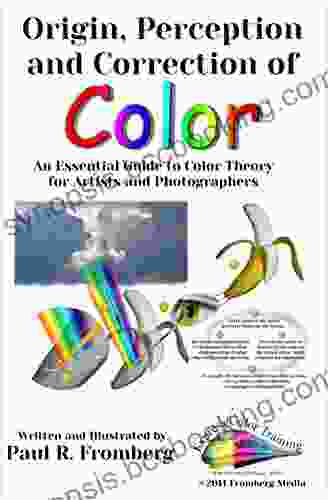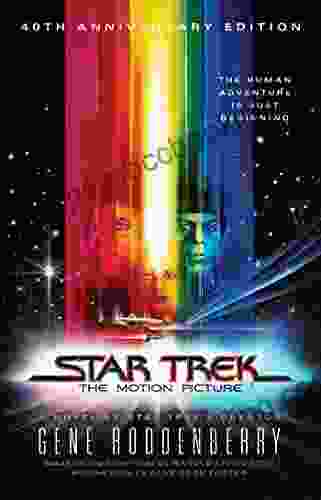Origin, Perception, and Correction of Color: The Ultimate Guide to Color Management

Color is everywhere around us. We see it in the world around us, in the clothes we wear, and in the art we create. But what is color, really? And how can we ensure that the colors we see are accurate and consistent across all of our devices and media?
This book is a comprehensive guide to color management. We'll start by exploring the origins of color and how our eyes and brains perceive it. Then, we'll delve into the different color spaces and color profiles used in digital imaging. Finally, we'll provide step-by-step instructions on how to calibrate your monitor and printer for accurate color reproduction.
Color is light. When white light strikes an object, some of the light is absorbed and some is reflected. The reflected light is what we see as color.
5 out of 5
| Language | : | English |
| File size | : | 5936 KB |
| Text-to-Speech | : | Enabled |
| Screen Reader | : | Supported |
| Enhanced typesetting | : | Enabled |
| Print length | : | 118 pages |
| Lending | : | Enabled |
The color of an object depends on three factors:
- The wavelength of the light: The wavelength of light determines the hue of a color. Shorter wavelengths are perceived as blue, while longer wavelengths are perceived as red.
- The intensity of the light: The intensity of light determines the saturation of a color. More intense light produces more saturated colors, while less intense light produces less saturated colors.
- The purity of the light: The purity of light determines the brightness of a color. Pure light is bright, while impure light is dull.
Our eyes and brains play a complex role in how we perceive color. The human eye has three types of cone cells that are sensitive to different wavelengths of light. These cone cells are located in the retina, which is the light-sensitive tissue at the back of the eye.
When light strikes the retina, it is converted into electrical signals that are sent to the brain. The brain then interprets these signals and creates an image of the world around us.
The way that we perceive color is influenced by a number of factors, including:
- The lighting conditions: The lighting conditions can affect the way that we perceive color. For example, colors appear more saturated in bright light than in dim light.
- The surrounding colors: The surrounding colors can also affect the way that we perceive color. For example, a white object will appear more blue if it is surrounded by blue objects.
- Our personal preferences: Our personal preferences can also affect the way that we perceive color. For example, some people prefer warm colors, while others prefer cool colors.
A color space is a mathematical model that describes the range of colors that can be represented in a particular medium. There are many different color spaces, each with its own advantages and disadvantages.
The most common color space used in digital imaging is the RGB color space. The RGB color space uses three primary colors—red, green, and blue—to create all of the other colors.
Another common color space is the CMYK color space. The CMYK color space uses four primary colors—cyan, magenta, yellow, and black—to create all of the other colors.
In addition to color spaces, color profiles are also used to ensure accurate color reproduction. A color profile is a file that contains information about a specific device, such as a monitor or printer. This information is used to ensure that the device reproduces colors accurately.
Monitor calibration is the process of adjusting your monitor so that it displays colors accurately. This is important for ensuring that the colors you see on your screen match the colors that will be printed or displayed on other devices.
There are several different ways to calibrate your monitor. One common method is to use a hardware calibration device. These devices measure the light output of your monitor and create a color profile that is specific to your monitor.
You can also calibrate your monitor using software. There are several different software programs available that can help you to calibrate your monitor.
Printer calibration is the process of adjusting your printer so that it prints colors accurately. This is important for ensuring that the colors you see on your screen match the colors that will be printed on paper.
There are several different ways to calibrate your printer. One common method is to use a spectrophotometer. This device measures the color output of your printer and creates a color profile that is specific to your printer.
You can also calibrate your printer using software. There are several different software programs available that can help you to calibrate your printer.
Color management is a complex but essential part of digital imaging. By understanding the origins of color, how our eyes and brains perceive it, and how to use color spaces and color profiles, you can ensure that the colors you see are accurate and consistent across all of your devices and media.
This book has provided you with a comprehensive guide to color management. We hope that you have found this information helpful and that you will use it to improve your color management skills.
Alt attributes for images:
- Image 1: A diagram of the visible light spectrum, showing the different colors and their wavelengths.
- Image 2: A photo of a human eye with a close-up of the retina.
- Image 3: A diagram of the RGB color space, showing the three primary colors and their combinations.
- Image 4: A diagram of the CMYK color space, showing the four primary colors and their combinations.
- Image 5: A photo of a hardware calibration device being used to calibrate a monitor.
- Image 6: A photo of a spectrophotometer being used to calibrate a printer.
5 out of 5
| Language | : | English |
| File size | : | 5936 KB |
| Text-to-Speech | : | Enabled |
| Screen Reader | : | Supported |
| Enhanced typesetting | : | Enabled |
| Print length | : | 118 pages |
| Lending | : | Enabled |
Do you want to contribute by writing guest posts on this blog?
Please contact us and send us a resume of previous articles that you have written.
 Book
Book Novel
Novel Page
Page Chapter
Chapter Text
Text Story
Story Genre
Genre Reader
Reader Library
Library Paperback
Paperback E-book
E-book Magazine
Magazine Newspaper
Newspaper Paragraph
Paragraph Sentence
Sentence Bookmark
Bookmark Shelf
Shelf Glossary
Glossary Bibliography
Bibliography Foreword
Foreword Preface
Preface Synopsis
Synopsis Annotation
Annotation Footnote
Footnote Manuscript
Manuscript Scroll
Scroll Codex
Codex Tome
Tome Bestseller
Bestseller Classics
Classics Library card
Library card Narrative
Narrative Biography
Biography Autobiography
Autobiography Memoir
Memoir Reference
Reference Encyclopedia
Encyclopedia William S Vincent
William S Vincent Gerald F Seib
Gerald F Seib James A Cashin
James A Cashin Donald Murray
Donald Murray E R Chamberlin
E R Chamberlin Gayne C Young
Gayne C Young Geri Keams
Geri Keams Geraint Thomas
Geraint Thomas George Washington Cable
George Washington Cable Risto Pakarinen
Risto Pakarinen George Heineman
George Heineman Gb Tran
Gb Tran Yogesh Chadha
Yogesh Chadha Gary O Neal
Gary O Neal Gaurav Mahajan
Gaurav Mahajan Garth Williams
Garth Williams Dougald Macdonald
Dougald Macdonald E J R David
E J R David James Penhaligon
James Penhaligon J R Moehringer
J R Moehringer
Light bulbAdvertise smarter! Our strategic ad space ensures maximum exposure. Reserve your spot today!

 David MitchellUnveiling the Secrets of Life: Harper Illustrated Biochemistry, Thirty-First...
David MitchellUnveiling the Secrets of Life: Harper Illustrated Biochemistry, Thirty-First... Russell MitchellFollow ·15.9k
Russell MitchellFollow ·15.9k Angelo WardFollow ·4.5k
Angelo WardFollow ·4.5k Jorge AmadoFollow ·9.9k
Jorge AmadoFollow ·9.9k Norman ButlerFollow ·5.5k
Norman ButlerFollow ·5.5k Owen SimmonsFollow ·5.9k
Owen SimmonsFollow ·5.9k John Dos PassosFollow ·8.3k
John Dos PassosFollow ·8.3k Jesse BellFollow ·10.7k
Jesse BellFollow ·10.7k Foster HayesFollow ·7.1k
Foster HayesFollow ·7.1k

 Robert Heinlein
Robert HeinleinUnveiling Humanism in China and the West: A Journey...
In our rapidly...

 Brian Bell
Brian BellBlind Boy's Unwavering Struggle Against Abuse and the...
In the tapestry of...

 Craig Carter
Craig CarterBuilding Wealth While Working for Uncle Sam: The Ultimate...
## ### Are you a federal employee who wants...

 Raymond Parker
Raymond ParkerUnveiling the Secrets of Arabic Survival: The Ultimate...
Embarking on a journey to unravel the...
5 out of 5
| Language | : | English |
| File size | : | 5936 KB |
| Text-to-Speech | : | Enabled |
| Screen Reader | : | Supported |
| Enhanced typesetting | : | Enabled |
| Print length | : | 118 pages |
| Lending | : | Enabled |














